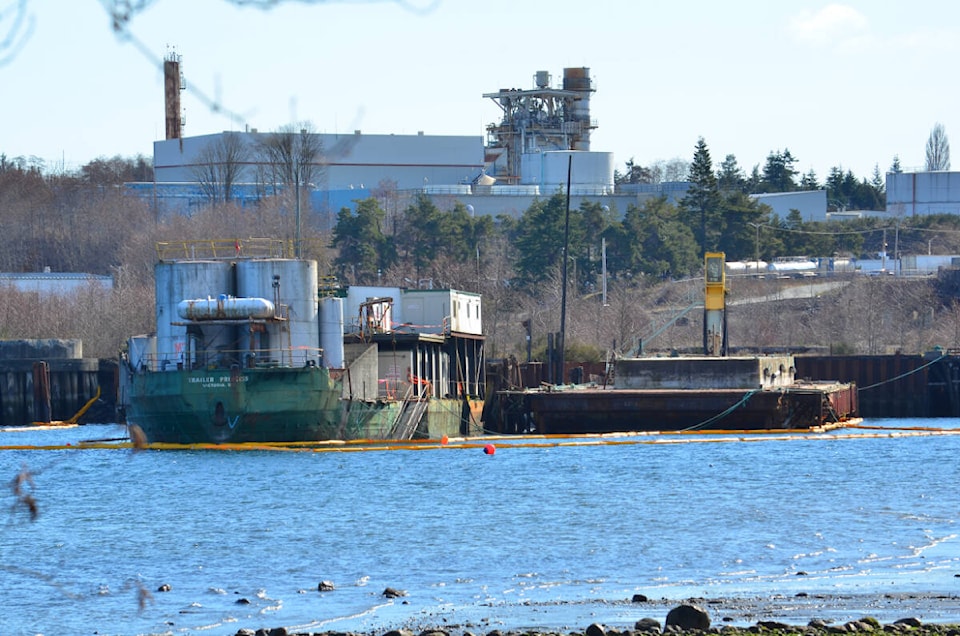The Canadian Coast Guard (CCG) will remove a sunken barge, Trailer Princess, located in Duncan Bay north of Campbell River and deconstruct it so that it no longer poses a threat to the marine environment.
Pollution removal and barge stabilization is underway, and removal and deconstruction of the barge will begin next week.
The 98m barge Trailer Princess was operated as a support barge for a logging operation, complete with helicopter platform and fueling capabilities. Due to the condition of the barge, and the threat posed by hydrocarbons on board, the barge was determined to be a high risk to pollute in the marine environment.
To date, a total of 89,000 L of hydrocarbons and oily water has been removed.
During the initial stages of the incident, the Canadian Coast Guard conducted a thorough assessment of the sunken barge and acted quickly to remove approximately 34,000 L of gasoline, diesel, and jet fuel from the barge’s tanks, a CCG press release says. However, crews have been unable to safely access all areas of the barge, including below-deck spaces due to the hazardous environment.
RELATED: Large barge sinking in Campbell River
The Canadian Coast Guard has retained AMIX/Marine Recycling Corporation (MRC) to remove the remaining fuels onboard and refloat the barge in preparation for its removal, deconstruction and recycling. Since the onset of the contract, AMIX/MRC has removed 55,000 L of hydrocarbons and oily water.
“The Canadian Coast Guard works around the clock to protect coastal communities and responds immediately to protect marine ecosystems from problem vessels like the Trailer Princess. Thank you to the Canadian Coast Guard team and the contractor for your work removing this environmental threat from the east coast of Vancouver Island,” Joyce Murray, Minister of Fisheries, Oceans and the Canadian Coast Guard, said.
In coordination with the Wei Wai Kum First Nation, the Canadian Coast Guard continues to maintain two layers of boom and absorbent material around the barge, and will oversee the salvage operation. The Canadian Coast Guard is ready to respond if there is an unexpected release of fuel during salvage.
Problem vessels across the country are addressed in order of priority, based on their level of risk. If any of these vessels pollute or threaten to imminently pollute, the Canadian Coast Guard acts quickly to protect the environment. The Canadian Coast Guard aims to reduce the impact of marine pollution spills on public safety, the economy, the environment, and culturally significant sites.
RELATED: VIDEO: 56-metre cargo ship removed from Desolation Sound
Quick facts
- Originally a WWII US Navy Landing Craft, the 98m barge Trailer Princess was converted into a rail ferry in the 1960’s and operated by Canadian Pacific. The barge was later sold and converted into a support barge for a logging camp complete with helicopter platform and fueling capabilities.
- The cost to remove the Trailer Princess from the marine environment is $4.7 million.
- The Canadian Coast Guard is the lead agency for all marine pollution incidents and works with the polluter (if willing and able), First Nations, and stakeholders and partners from federal, provincial/territorial and municipal agencies towards the successful resolution of marine pollution incidents.
- Canada follows the “polluter pays” principle. This means the polluter is liable for the costs of damage caused by their pollution.
